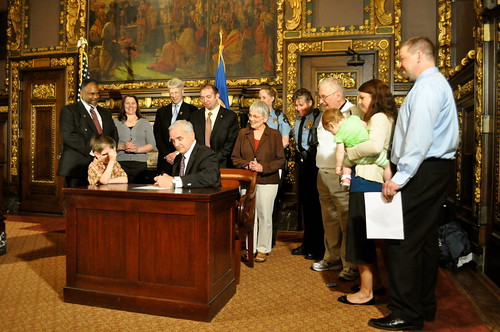 April is Autism Awareness Month, the two month anniversary of the Marjory Stoneman Douglas High School shooting, and the 19th anniversary of Columbine. Why talk about ASD and school shootings in the same sentence? And why a divorce blog? I will get to that. But as a lawyer-mom, these two issues are at the forefront of my mind, and probably the minds of many parents and educators these days. We should rest assured that our kids would know what to do during a lock-down because they have spontaneous drills throughout the year, right? Ugh…what am I saying? The fact that kids NEED lockdown drills is downright outrageous! Nonetheless, I wondered what the younger kids are told and what happens during these drills. Well, lucky me, when I recently volunteered in my son’s elementary school classroom, the school had a lock down drill. And one word sums up the experience: chilling.
Lockdown drills are very different from the fire and tornado drills we had as kids. I’m sure everyone remembers the fire drills – exit the classroom quickly and get away from the building. Or the tornado drills – go out to the hallways, away from the doors and windows, and cover your head with your hands. Up until about 1999, THOSE were the drills Minnesotan kids experienced. In fact, most the time, much to our teacher’s chagrin, we were laughing and joking around. A lock down drill, however, has a very different vibe. The kids must be EXTREMELY quiet. They huddle into a specific area and are instructed to remain eerily still. This had been a bustling class (and school) just moments before, but now it was so quiet, you could hear a pin drop. This was a class of 30 second graders, so I was stunned at the deafening silence. Just when I thought it was over (it seemed like forever, but was probably two minutes) someone rattled the door handle. Forcefully. Not a peep from the kids, but I jumped. Luckily, they didn’t see me or they might have erupted into giggles. We had to continue to remain quiet and motionless. Interestingly, I don’t remember what happened next; that is, I don’t recall if there was a bell or another signal indicating the drill was over (I think I was sort of in shock). The kids went about their business, working on their projects, like it was no big deal. Only it was a big deal. At least it was to me and the other adults in the room. I just looked at the staff, wide-eyed, and shook my head.
School lock downs are now a reality for school-aged children. It makes my heart ache. I asked my son that evening why they have lockdowns and he nonchalantly said it was in case anyone wants to break into the school. That was it. Simple enough. But as we grown-ups know, there is nothing simple about this.
My son is a “mover and a crasher,” so I was relieved he made it through the drill. But I thought about the other high-needs/special-needs kids in his school. For any child who has physical needs or doesn’t cognitively understand the drill, simply can’t be quiet and remain calm, needs to move, or overreacts when accidentally bumped or touched by a classmate, what would that child do in this drill? Or, God forbid, in a REAL situation? With more and more kids being diagnosed with ASD, what protocols are in place for them? Is there a special section in their IEP about drills? There ought to be.
This made me think about special-needs kids whose parents are going through a divorce. The teachers are aware of kids’ needs (or should be). So, too, should the divorce team. A child’s symptoms often reemerge or worsen when they are stressed, which could happen during parental conflict and/or separation. Child specialists can work with the parents and the child’s pediatrician and/or therapist to help create a parenting plan that is in the child’s best interests. Like it or not, otherwise fit and loving parents need to work together for there children’s sake. Fortunately, the Collaborative process can help parents really focus on their kids, by putting them in the center, rather than the middle, of the divorce process. Every family situation is unique. Every family and every child deserve a creative plan to help move them forward, restructure, and get to a new “normal.” Drill and lockdown protocols included.
April is Autism Awareness Month, the two month anniversary of the Marjory Stoneman Douglas High School shooting, and the 19th anniversary of Columbine. Why talk about ASD and school shootings in the same sentence? And why a divorce blog? I will get to that. But as a lawyer-mom, these two issues are at the forefront of my mind, and probably the minds of many parents and educators these days. We should rest assured that our kids would know what to do during a lock-down because they have spontaneous drills throughout the year, right? Ugh…what am I saying? The fact that kids NEED lockdown drills is downright outrageous! Nonetheless, I wondered what the younger kids are told and what happens during these drills. Well, lucky me, when I recently volunteered in my son’s elementary school classroom, the school had a lock down drill. And one word sums up the experience: chilling.
Lockdown drills are very different from the fire and tornado drills we had as kids. I’m sure everyone remembers the fire drills – exit the classroom quickly and get away from the building. Or the tornado drills – go out to the hallways, away from the doors and windows, and cover your head with your hands. Up until about 1999, THOSE were the drills Minnesotan kids experienced. In fact, most the time, much to our teacher’s chagrin, we were laughing and joking around. A lock down drill, however, has a very different vibe. The kids must be EXTREMELY quiet. They huddle into a specific area and are instructed to remain eerily still. This had been a bustling class (and school) just moments before, but now it was so quiet, you could hear a pin drop. This was a class of 30 second graders, so I was stunned at the deafening silence. Just when I thought it was over (it seemed like forever, but was probably two minutes) someone rattled the door handle. Forcefully. Not a peep from the kids, but I jumped. Luckily, they didn’t see me or they might have erupted into giggles. We had to continue to remain quiet and motionless. Interestingly, I don’t remember what happened next; that is, I don’t recall if there was a bell or another signal indicating the drill was over (I think I was sort of in shock). The kids went about their business, working on their projects, like it was no big deal. Only it was a big deal. At least it was to me and the other adults in the room. I just looked at the staff, wide-eyed, and shook my head.
School lock downs are now a reality for school-aged children. It makes my heart ache. I asked my son that evening why they have lockdowns and he nonchalantly said it was in case anyone wants to break into the school. That was it. Simple enough. But as we grown-ups know, there is nothing simple about this.
My son is a “mover and a crasher,” so I was relieved he made it through the drill. But I thought about the other high-needs/special-needs kids in his school. For any child who has physical needs or doesn’t cognitively understand the drill, simply can’t be quiet and remain calm, needs to move, or overreacts when accidentally bumped or touched by a classmate, what would that child do in this drill? Or, God forbid, in a REAL situation? With more and more kids being diagnosed with ASD, what protocols are in place for them? Is there a special section in their IEP about drills? There ought to be.
This made me think about special-needs kids whose parents are going through a divorce. The teachers are aware of kids’ needs (or should be). So, too, should the divorce team. A child’s symptoms often reemerge or worsen when they are stressed, which could happen during parental conflict and/or separation. Child specialists can work with the parents and the child’s pediatrician and/or therapist to help create a parenting plan that is in the child’s best interests. Like it or not, otherwise fit and loving parents need to work together for there children’s sake. Fortunately, the Collaborative process can help parents really focus on their kids, by putting them in the center, rather than the middle, of the divorce process. Every family situation is unique. Every family and every child deserve a creative plan to help move them forward, restructure, and get to a new “normal.” Drill and lockdown protocols included.  April is Autism Awareness Month, the two month anniversary of the Marjory Stoneman Douglas High School shooting, and the 19th anniversary of Columbine. Why talk about ASD and school shootings in the same sentence? And why a divorce blog? I will get to that. But as a lawyer-mom, these two issues are at the forefront of my mind, and probably the minds of many parents and educators these days. We should rest assured that our kids would know what to do during a lock-down because they have spontaneous drills throughout the year, right? Ugh…what am I saying? The fact that kids NEED lockdown drills is downright outrageous! Nonetheless, I wondered what the younger kids are told and what happens during these drills. Well, lucky me, when I recently volunteered in my son’s elementary school classroom, the school had a lock down drill. And one word sums up the experience: chilling.
Lockdown drills are very different from the fire and tornado drills we had as kids. I’m sure everyone remembers the fire drills – exit the classroom quickly and get away from the building. Or the tornado drills – go out to the hallways, away from the doors and windows, and cover your head with your hands. Up until about 1999, THOSE were the drills Minnesotan kids experienced. In fact, most the time, much to our teacher’s chagrin, we were laughing and joking around. A lock down drill, however, has a very different vibe. The kids must be EXTREMELY quiet. They huddle into a specific area and are instructed to remain eerily still. This had been a bustling class (and school) just moments before, but now it was so quiet, you could hear a pin drop. This was a class of 30 second graders, so I was stunned at the deafening silence. Just when I thought it was over (it seemed like forever, but was probably two minutes) someone rattled the door handle. Forcefully. Not a peep from the kids, but I jumped. Luckily, they didn’t see me or they might have erupted into giggles. We had to continue to remain quiet and motionless. Interestingly, I don’t remember what happened next; that is, I don’t recall if there was a bell or another signal indicating the drill was over (I think I was sort of in shock). The kids went about their business, working on their projects, like it was no big deal. Only it was a big deal. At least it was to me and the other adults in the room. I just looked at the staff, wide-eyed, and shook my head.
School lock downs are now a reality for school-aged children. It makes my heart ache. I asked my son that evening why they have lockdowns and he nonchalantly said it was in case anyone wants to break into the school. That was it. Simple enough. But as we grown-ups know, there is nothing simple about this.
My son is a “mover and a crasher,” so I was relieved he made it through the drill. But I thought about the other high-needs/special-needs kids in his school. For any child who has physical needs or doesn’t cognitively understand the drill, simply can’t be quiet and remain calm, needs to move, or overreacts when accidentally bumped or touched by a classmate, what would that child do in this drill? Or, God forbid, in a REAL situation? With more and more kids being diagnosed with ASD, what protocols are in place for them? Is there a special section in their IEP about drills? There ought to be.
This made me think about special-needs kids whose parents are going through a divorce. The teachers are aware of kids’ needs (or should be). So, too, should the divorce team. A child’s symptoms often reemerge or worsen when they are stressed, which could happen during parental conflict and/or separation. Child specialists can work with the parents and the child’s pediatrician and/or therapist to help create a parenting plan that is in the child’s best interests. Like it or not, otherwise fit and loving parents need to work together for there children’s sake. Fortunately, the Collaborative process can help parents really focus on their kids, by putting them in the center, rather than the middle, of the divorce process. Every family situation is unique. Every family and every child deserve a creative plan to help move them forward, restructure, and get to a new “normal.” Drill and lockdown protocols included.
April is Autism Awareness Month, the two month anniversary of the Marjory Stoneman Douglas High School shooting, and the 19th anniversary of Columbine. Why talk about ASD and school shootings in the same sentence? And why a divorce blog? I will get to that. But as a lawyer-mom, these two issues are at the forefront of my mind, and probably the minds of many parents and educators these days. We should rest assured that our kids would know what to do during a lock-down because they have spontaneous drills throughout the year, right? Ugh…what am I saying? The fact that kids NEED lockdown drills is downright outrageous! Nonetheless, I wondered what the younger kids are told and what happens during these drills. Well, lucky me, when I recently volunteered in my son’s elementary school classroom, the school had a lock down drill. And one word sums up the experience: chilling.
Lockdown drills are very different from the fire and tornado drills we had as kids. I’m sure everyone remembers the fire drills – exit the classroom quickly and get away from the building. Or the tornado drills – go out to the hallways, away from the doors and windows, and cover your head with your hands. Up until about 1999, THOSE were the drills Minnesotan kids experienced. In fact, most the time, much to our teacher’s chagrin, we were laughing and joking around. A lock down drill, however, has a very different vibe. The kids must be EXTREMELY quiet. They huddle into a specific area and are instructed to remain eerily still. This had been a bustling class (and school) just moments before, but now it was so quiet, you could hear a pin drop. This was a class of 30 second graders, so I was stunned at the deafening silence. Just when I thought it was over (it seemed like forever, but was probably two minutes) someone rattled the door handle. Forcefully. Not a peep from the kids, but I jumped. Luckily, they didn’t see me or they might have erupted into giggles. We had to continue to remain quiet and motionless. Interestingly, I don’t remember what happened next; that is, I don’t recall if there was a bell or another signal indicating the drill was over (I think I was sort of in shock). The kids went about their business, working on their projects, like it was no big deal. Only it was a big deal. At least it was to me and the other adults in the room. I just looked at the staff, wide-eyed, and shook my head.
School lock downs are now a reality for school-aged children. It makes my heart ache. I asked my son that evening why they have lockdowns and he nonchalantly said it was in case anyone wants to break into the school. That was it. Simple enough. But as we grown-ups know, there is nothing simple about this.
My son is a “mover and a crasher,” so I was relieved he made it through the drill. But I thought about the other high-needs/special-needs kids in his school. For any child who has physical needs or doesn’t cognitively understand the drill, simply can’t be quiet and remain calm, needs to move, or overreacts when accidentally bumped or touched by a classmate, what would that child do in this drill? Or, God forbid, in a REAL situation? With more and more kids being diagnosed with ASD, what protocols are in place for them? Is there a special section in their IEP about drills? There ought to be.
This made me think about special-needs kids whose parents are going through a divorce. The teachers are aware of kids’ needs (or should be). So, too, should the divorce team. A child’s symptoms often reemerge or worsen when they are stressed, which could happen during parental conflict and/or separation. Child specialists can work with the parents and the child’s pediatrician and/or therapist to help create a parenting plan that is in the child’s best interests. Like it or not, otherwise fit and loving parents need to work together for there children’s sake. Fortunately, the Collaborative process can help parents really focus on their kids, by putting them in the center, rather than the middle, of the divorce process. Every family situation is unique. Every family and every child deserve a creative plan to help move them forward, restructure, and get to a new “normal.” Drill and lockdown protocols included. 








